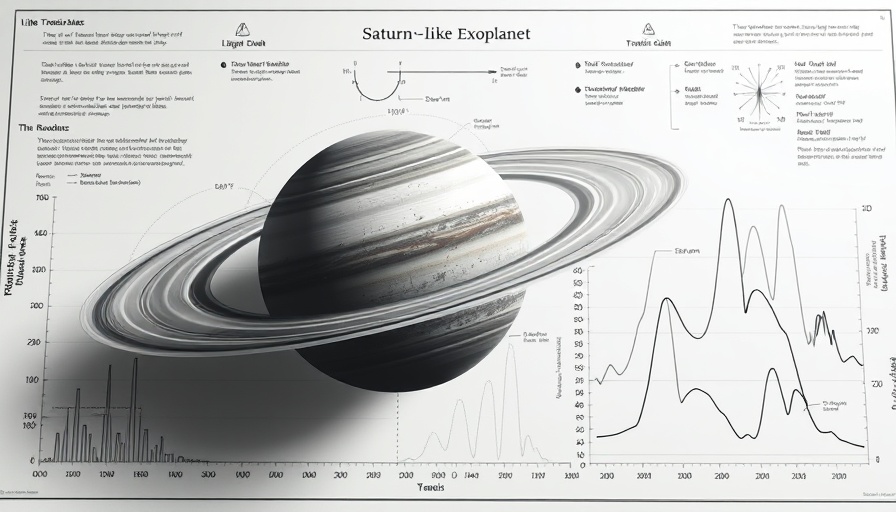
A New Gem Among the Stars: Discovering TOI-5573 b
A team of international astronomers has recently unveiled an exciting discovery—a new giant exoplanet, TOI-5573 b, orbiting the M-dwarf star TOI-5573. Located approximately 605.7 light-years away, this planet offers a fascinating glimpse into the formation and characteristics of planets that differ significantly from our familiar solar environment. TOI-5573 b is similar in size to Saturn, with a mass estimated at 0.35 Jupiter masses, highlighting the uniqueness of GEMS, or Giant Exoplanets around M-dwarf stars.
What Makes TOI-5573 b Unique?
GEMS like TOI-5573 b are not commonly found. Due to the lesser mass of protoplanetary disks that orbit M-dwarf stars, the formation of such large planets is challenging. With sizes about 8 to 15 times larger than Earth, GEMS must contend with limitations in the materials available to coalesce into their large cores. Thus, their discovery can illuminate the complexities of planetary formation under varying cosmic conditions.
The Role of Super-Solar Metallicity in Planet Formation
Interestingly, TOI-5573 b has been noted to possess super-solar metallicity, suggesting a metal-rich environment that could influence planet formation. As researchers, including Rachel B. Fernandes from Pennsylvania State University, have discovered, giant planets may predominantly develop around M-dwarfs with elevated metal content. These characteristics again repeat the narrative of how the chemical composition of a star can directly impact its orbiting planets, an insight crucial for understanding planetary habitats.
Environmental Considerations for Future Studies
TOI-5573 b, with its equilibrium temperature calculated to be around 528 K, may represent one of the cooler GEMS discovered to date, making it an intriguing target for atmospheric studies. As scientists aim to analyze the atmospheres of such planets, TOI-5573 b could serve as a window into identifying potential biosignatures or unusual atmospheric phenomena, enriching our broader understanding of the cosmos.
The Significance of M-Dwarf Stars in Astronomy
M-dwarf stars, such as TOI-5573, are renowned for their fascinating properties and prevalence in the galaxy. With roughly three times as many M-dwarfs as there are stars similar to our Sun, the study of these stars continues to reveal insights about potential habitats for life and planetary formation. Moreover, understanding GEMS could lead astronomers to identify more planets with characteristics that might support life.
What This Discovery Means for Future Research
This groundbreaking discovery emphasizes the importance of continued exploration and monitoring of exoplanets within our galaxy. Utilizing cutting-edge technology, such as NASA's Transiting Exoplanet Survey Satellite (TESS), researchers are uncovering planets that defy previous understanding. This evolving landscape invites more robust discussions on the potential for life beyond Earth, and the role GEMS like TOI-5573 b might play in that conversation.
As space exploration continues to thrive, discoveries like TOI-5573 b not only inspire the imagination but also challenge our perceptions of planetary systems, guiding us towards unprecedented frontiers of knowledge about our universe.
 Add Row
Add Row  Add
Add 




Write A Comment